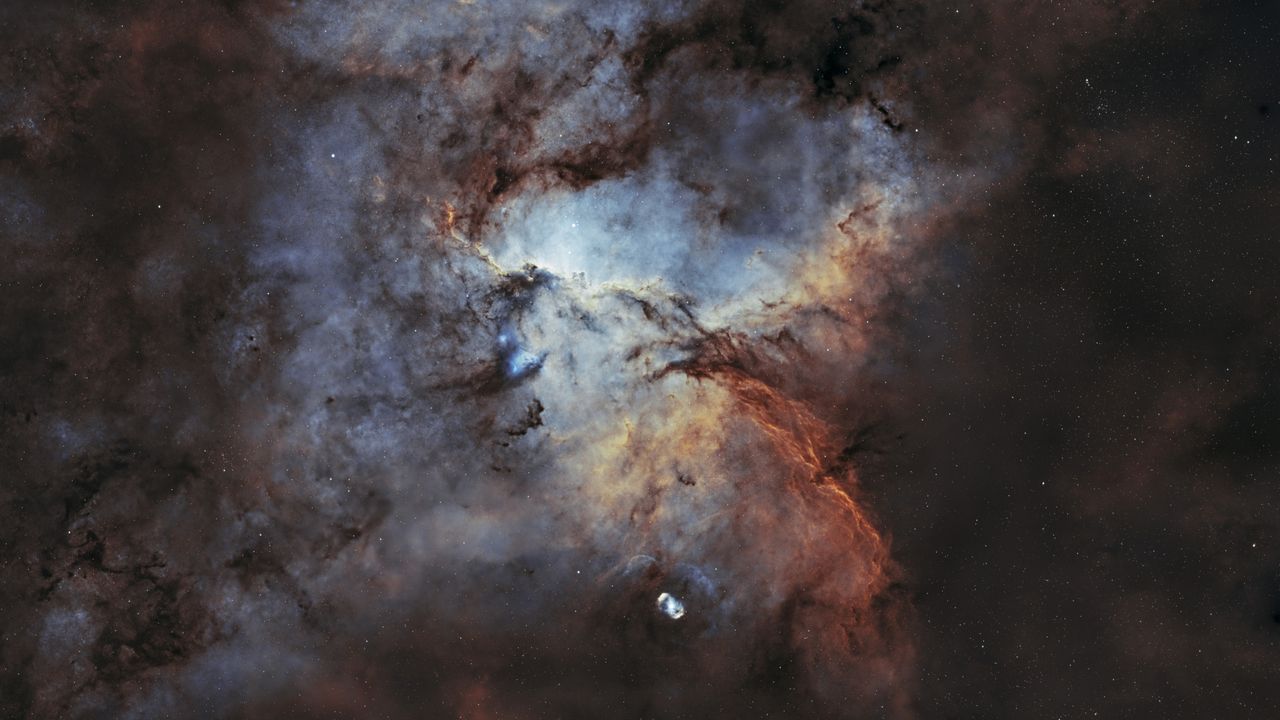BREAKING: Amateur astrophotographer Tim Henderson has just unveiled a breathtaking trio of nebulae captured in the pristine dark skies of the Central Australian Desert. This stunning visual achievement was completed during late April and May 2025, showcasing the beauty of the universe through Henderson’s lens.
Using an Askar SQA55 telescope and high-end astronomy equipment, Henderson meticulously captured detailed portraits of the Carina Nebula, along with the emission nebulae NGC 6188 and Sh2-1. A total of 50 separate exposures, each lasting 240 seconds, were combined to bring to light the colossal filaments of dust and gas that comprise NGC 6188, located approximately 4,000 light-years from Earth in the southern constellation Ara.
The intricate shapes of NGC 6188, often likened to dueling monsters, have earned it the nickname “the Dragons of Ara.” In addition, the bright form of another nebula, NGC 6164, can be seen in the images, surrounded by a faint gaseous shell, adding to the spectacle.
“The skies here have zero light pollution, except for the moon, and the nights are cloudless 90% of the time, especially during winter,” Henderson stated in an email to Space.com. “It’s such an amazing place to enjoy the night sky!” His journey into astrophotography began just two years ago with a basic DSLR setup, and he has progressed to more sophisticated equipment, revealing spectacular targets in the southern hemisphere.
Henderson also captured the vast and vibrant Carina Nebula, which lies about 7,500 light-years from Earth. This stellar nursery is home to numerous massive stars, with some weighing between 50-100 times that of our sun, according to NASA. The intense radiation from these massive stars ionizes the surrounding nebula, causing it to glow brilliantly. Remarkably, Henderson discovered that his view of the Carina Nebula took on the vague outline of Australia.
The emission nebula Sh2-1, also recognized as Sharpless 1, reveals complex cloud-like structures and cavities nestled within the constellation Scorpius, near the bright star Pi Scorpii.
Henderson’s astrophotography took place right next to his remote wildlife station cabin, where he has easy access to power and internet. This unique setting allows him to work nights, as the nocturnal animals he studies, such as the bilby, permit him to set up his astrophotography rig before his shifts. “I schedule it to take photos until I get home,” he explained.
For aspiring stargazers eager to capture their own night sky photography, resources are available to help. Check out our roundup of the best cameras and lenses for astrophotography in 2025, along with guides to top smartphone astronomy apps that utilize augmented reality to enhance your stargazing experience.
As the excitement around Henderson’s stunning captures spreads, many are eager to share their own astrophotography experiences. Those interested are encouraged to send their photos, comments, and personal stories to [email protected].
Stay tuned for more updates as astrophotography continues to reveal the wonders of our universe!
